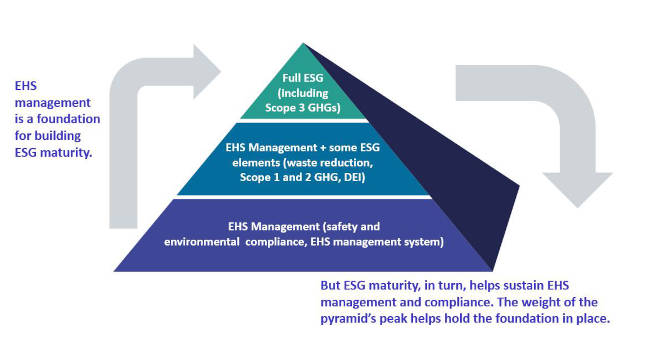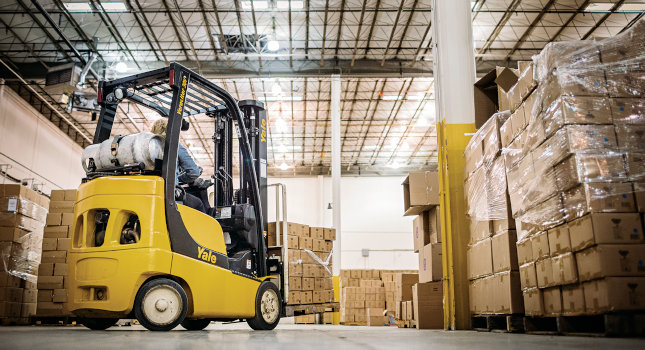A more advanced system improves operation and maintenance—if done correctly.
Wastewater treatment plants (WWTPs) around the world must continually examine better ways to responsibly treat used water and efficiently manage solid waste disposal. Handling wastewater byproducts, i.e., sewage sludge, generally is done by burying it in landfills, incinerating it, or recycling it into useable products.
Much like manufacturing facilities, WWTPs face growing challenges:
- Stricter compliance regulations;
- Aging equipment;
- Outdated technology; and
- Rising energy costs.
Additionally, as populations and land developments increase, so does the need to add wastewater treatment capacity.
Innovative solutions
In 2016, the Great Lakes Water Authority (GLWA) was established for operating, improving infrastructure, complying with environmental regulations, and setting budgets for the municipal water and sewage treatment plant for the City of Detroit and its communities.
After close examination of the immediate and foreseeable needs of the facility, a decision was made by the GLWA to add a Biosolids Dryer Facility (BDF), which started operation in 2015. BDFs treat sludge and reduce wastewater solids volume through heat drying (dewatering), resulting in a reusable end product, i.e., Class A Exceptional Quality (EQ) biosolid.
Class A EQ biosolids meet U.S. Environmental Protection Agency guidelines and can be used as farm and vegetable garden fertilizer and sold to home gardeners as compost or fertilizer. The GLWA contracted the New England Fertilizer Company (NEFCO) to design, build, and operate the BDF. Along with the expanded end uses for dried biosolids, including bulk land application, fertilizer blending, land reclamation and alternative fuels (cement kilns, power generation, renewable fuel), the BDF also would have superior emissions, noise, and odor control systems.
The GLWA wastewater treatment plant, later called the Water Resource Recovery Facility (WRRF), served 3 million people, or 40% of Michigan’s population. The total solids generated by the plant averaged 450 dry tons per day (dtpd) and prior to the BDF were disposed of using incineration (67%), landfills (22%) and land application (11%).
By building a BDF plant, projections showed an annual operations and maintenance savings of $16.9 million, a 20-year O&M savings equaling $337.3 million (in 2013 dollars) and an 8.5-year payback period on the $143 million capital cost.
Tap the experts
By contracting with NEFCO, the GLWA gained a trusted advisor experienced at building, commissioning, and running BDF facilities with in-depth knowledge of best practices. To complement the new BDF, NEFCO wanted to upgrade the company’s existing computerized maintenance management software (CMMS) to further capitalize on the increased cost-saving benefits that newer, technologically-advanced systems offered, such as progressive data collection, analysis, and cloud storage capabilities accessible by any web-based device.
The new CMMS had to be compatible with the present GLWA system and just as importantly, keep pace with industrial innovations, continuing growth, and changing needs. With that in mind, NEFCO identified and vetted potential systems, analyzed alternatives, and selected a viable pool of possible candidates.
Generally, the software had to possess:
- Preventive maintenance scheduling capabilities
- Tracking functions, including corrective emergency maintenance tracking functions
- Incorporation of a coded identification system for inventorying all loose and packaged items.
Also, the CMMS provider had to guarantee that the system could be installed and functioning 30 days prior to the completion of the facility’s first three dryer trains. Using detailed research and team input, NEFCO created a list of critical factors, then prioritized and weighted them for ranking final candidates on a scale of one to five. A sample of the selection matrix is shown in Table 1.
Challenge your CMMS
One of NEFCO’s overarching goals not only was to upgrade the company’s CMMS to meet the needs of the greenfield GLWA plant, but also to use it to standardize and optimize operations at several of NEFCO’s legacy plants. Selecting the most suitable and capable CMMS for one entity can be daunting; selecting one to handle and adapt to fit six different plants greatly multiplied the challenges and decision-making criteria.
To bring about the desired stability and consistency and achieve NEFCO’s corporate improvement goals, the upgraded CMMS would need to be populated with crucial data and information, as well as provide an accurate picture of the organization’s present status and maintenance processes. Also, the system had to permit convenient and continuous entry through a flexible Software as a Service (SaaS) model.
Lessons learned
Early on, NEFCO anticipated the importance of creating a unified front by engaging key legacy plant personnel and other important stakeholders. By welcoming their valuable input, the company ensured a smoother transition to the new CMMS.
Once a final candidate was chosen, the NEFCO team forged ahead to further develop their avenue to success. A to-do list served to separate work assignments into manageable, achievable chunks, and kept the team focused and organized.
Among the items on the to-do list were:
- Establish an implementation team
- Create a road map and timeline
- Share best practices and practical knowledge with the core team
- Develop workflows and processes
- Standardize equipment maintenance procedures
- Develop an implementation process
- Configure applicable data fields and forms
- Train main users to ensure skilled CMMS use
- Create an attainable go-live strategy
- Audit the process.
When NEFCO created the CMMS selection guide, the team recognized that personnel training and customer service would be key considerations in making the decision. The new provider offered a wide variety of online and onsite training options, as well as had a record of responsive service and support before and after implementation.
Build a baseline
NEFCO used its Quincy, Mass. plant’s legacy maintenance management system to build the baseline for the new CMMS. Preventive maintenance schedules were established, and contacts and locations were entered into the system. Along with a database of standardized information, facility-specific forms were created to fit each location to facilitate incorporation of the system with legacy plants.
Once NEFCO’s new configurable, easy-to-use CMMS became operational, plant managers took full advantage of a broad variety of features, from ordering supplies and tracking spare parts, to using reports and dashboards to analyze key business metrics, such as mean time between failures and mean time to repair.
At the innovative GLWA plant, mechanics are operating paperless, using tablets for reviewing standard operating procedures and showing completion of field work orders via electronic signature sign-offs. Additionally, workers easily tapped the central data system to show officials how they complied with maintenance regulations to meet strict industry standards. Also, the new CMMS’s tracking abilities can instantly provide accurate maintenance asset histories to help personnel make substantiated decisions about whether to replace or repair assets.
Ultimately, NEFCO’s CMMS choice provides a way to strategically and accurately input, optimize, and apply valuable data to control short- and long-term maintenance activities, with a goal of increasing asset lifecycles, while effectively expanding to meet future growth and technological advances.
Gregory Perry is a senior maintenance reliability consultant with Fluke Accelix.



